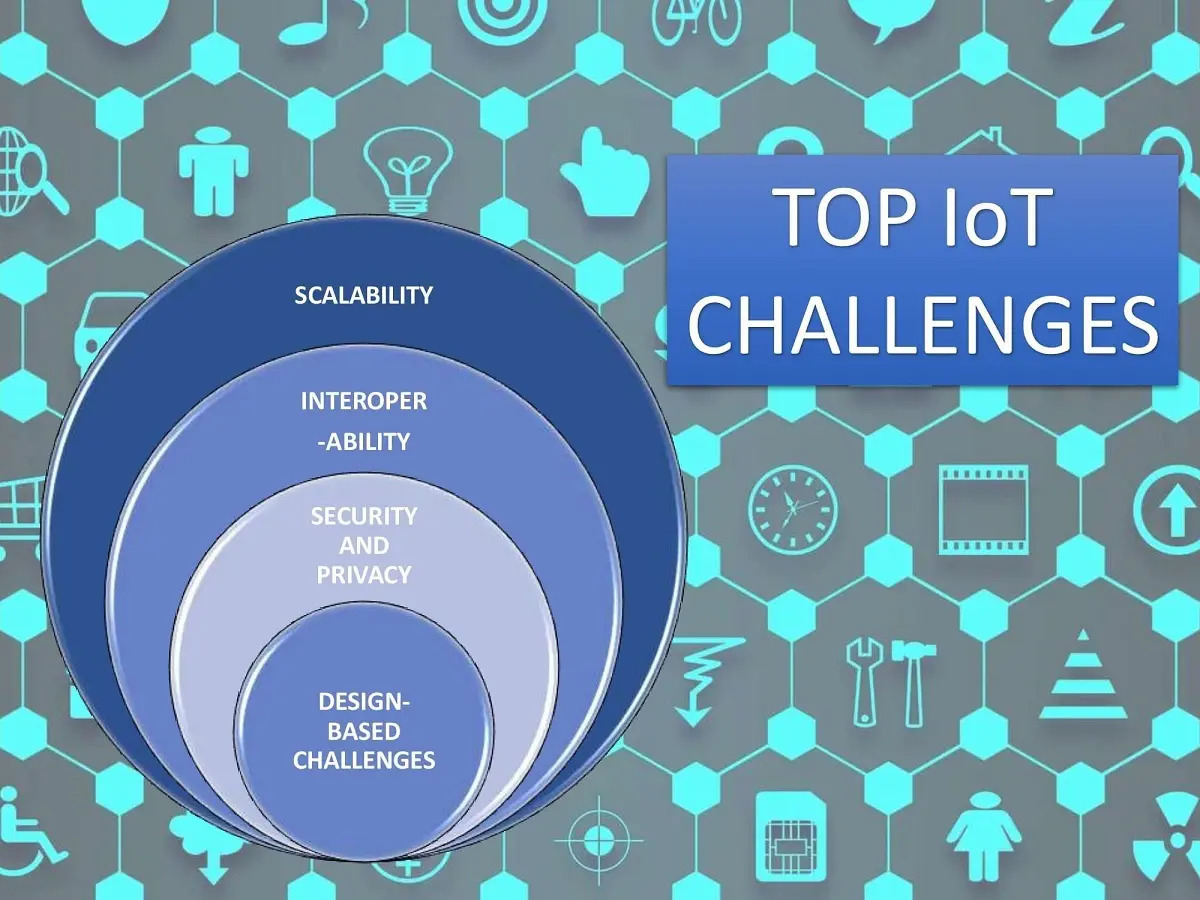Most Common IoT Challenges and How to Solve Them

The Internet of Things (IoT) is all about connecting physical devices, vehicles, home appliances, and other items embedded with electronics, software, sensors, and connectivity. This connectivity allows these objects to exchange data and interact with each other. Unlike traditional devices such as computers, smartphones, and tablets, IoT extends internet connectivity to various instruments and everyday things.
The main aim of IoT is to provide advanced connectivity for devices, systems, and services, expanding beyond simple machine-to-machine communication. Consult with Managed IT Services Charlotte experts to leverage the power of IoT technology.
According to a recent study by Statista, IoT market revenue is expected to show an annual growth rate (CAGR 2023-2028) of 13.60%, resulting in a market volume of US$2,227.00bn by 2028. Thus, the Internet of Things (IoT) has rapidly become an integral part of our everyday lives, revolutionizing how we live, communicate, and conduct business. With web-enabled devices proliferating across the globe, our world is transforming into a highly connected and dynamic environment.
There are various types of challenges in front of IoT.
Contents
6 Most Common IoT Challenges and Solutions
1. Device Compatibility
A significant obstacle in setting up IoT solutions is ensuring all devices are compatible. This is because many different devices and protocols are available, making it tough to guarantee that all devices can communicate seamlessly within a network. This can result in interoperability problems and hinder the smooth integration of IoT systems. To overcome this challenge, conducting thorough research and picking devices compatible with each other and the overall IoT architecture is essential.
Additionally, implementing standard communication protocols, such as MQTT or CoAP, can facilitate interoperability between different devices. Regular testing and monitoring of device compatibility should also be carried out to identify any potential issues early on and address them promptly. By addressing device compatibility challenges proactively, businesses can ensure smooth operation and maximize the benefits of their IoT implementations.
2. Security Concerns
When it comes to the Internet of Things (IoT), security concerns are one of the most common challenges that businesses face. With the increasing interconnectedness of devices and the amount of sensitive data being transmitted, ensuring the security of IoT systems is crucial. To address this challenge, businesses can implement several measures to enhance security. This includes using strong encryption algorithms to protect data, regularly updating software and firmware to patch vulnerabilities, and implementing multi-factor authentication protocols.
Additionally, businesses should conduct regular security audits and assessments to identify and mitigate potential risks. By taking these proactive steps, companies can help safeguard their IoT systems from potential cyber threats and ensure the privacy and integrity of their data.
3. Interoperability
Interoperability is one of the most common challenges of the Internet of things. Ensuring seamless communication and compatibility can be complex with the vast array of devices and systems involved in an IoT ecosystem. To address this challenge, it is essential to establish clear standards and protocols that all devices and systems adhere to. This can help ensure interoperability across different platforms and enable devices to communicate effectively with each other.
In addition, investing in robust integration tools and platforms can help bridge the gap between disparate systems, allowing for seamless data exchange and interoperability. Regular IoT infrastructure testing and monitoring can also help identify compatibility issues early on, allowing for timely resolutions. If you want to address interoperability challenges, contact our IT Support Raleigh experts.
4. Privacy and Ethical Concerns
Privacy and ethical concerns are among the most common challenges in IoT. With the increasing amount of data collected by connected devices, there is a growing concern about how this data is used and protected. Users are worried about their personal information being accessed or misused, and there is a need for clear regulations and standards to ensure privacy in IoT applications.
Furthermore, ethical considerations arise when IoT devices are used in sensitive areas such as healthcare or surveillance. As a solution, organizations should prioritize privacy by implementing robust security measures, obtaining informed consent from users, and providing transparent policies on data usage.
5. Bandwidth Availability
Bandwidth availability is a common challenge in implementing IoT systems. With the increasing number of connected devices, the demand for bandwidth continues to grow. This can strain existing networks and lead to slow data transfer rates and latency problems. To solve this challenge, businesses can consider implementing technologies such as edge computing, which allows data processing closer to the source, reducing the need for large bandwidth.
Optimizing network infrastructure and working with internet service providers to ensure sufficient bandwidth capacity can also help address this challenge. Businesses can secure their IoT systems’ smooth and efficient operation by addressing bandwidth availability concerns.
6. Scalability
Implementing IoT solutions often presents the challenge of scalability. With the exponential growth of connected devices and generated data, organizations must ensure that their infrastructure can handle the increased workload. One solution is to adopt a cloud-based approach, which offers flexible scaling of resources based on demand.
In addition, implementing edge computing can help reduce latency and improve scalability by processing data closer to the source. Establishing a robust network infrastructure to support increased traffic and ensure seamless communication between devices is also essential. By addressing scalability challenges proactively, organizations can maximize the potential of their IoT deployments and drive innovation in their respective industries.
Conclusion
Implementing IoT solutions can be a complex process, but by understanding and addressing the common challenges in internet of things that come with it, businesses can unlock the full potential of this transformative technology. Each challenge requires careful planning and strategic solutions, from security concerns to interoperability issues. By fostering collaboration between different stakeholders, investing in robust security measures, and adopting open standards, businesses can overcome these challenges and fully leverage the benefits of IoT. As we continue to navigate the ever-evolving landscape of IoT, it is crucial to stay informed, adapt to changes, and embrace this technology’s possibilities.





